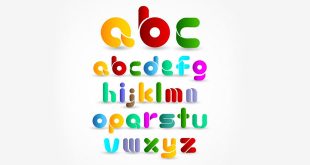How To Use A Semicolon
A semicolon is stronger than a comma but weaker than the full stop. While a full stop marks the end of a sentence, a semicolon is a strong internal punctuation. This makes it one of the secondary boundary marks. It allows you to write sentences of different lengths and different rhythms by helping you connect subtly similar ideas. Along with these two major uses, a semicolon can be used in various unusual situations too.
Usage #1
A semicolon is used to join two complete sentences into a single sentence. It can even join two such independent clauses which are too closely related to be separated by a full stop and do not have any connecting words like ‘and’ or ‘but’ which enable the use of a comma.
Examples:
- Happiness isn’t something you experience; it’s something you remember.
- Management is doing things right; leadership is doing the right things.
In the above examples, although a full stop could be used instead of a semicolon, the balanced effect would be diminished. And the effect of the idea of the first clause or sentence merging into the second would be affected.
Usage #2
A semicolon is used to join two complete sentences into a single sentence where the second sentence begins with a conjunctive adverb such as ‘however’, ‘nevertheless’, ‘accordingly’, ‘consequently’ or ‘instead’ etc.
Examples:
- I wanted to make my speech short; however, there was so much to cover.
- Some people write with a word processor; others write with a pen or pencil.
- Of these patients, 6 were not enrolled; thus, the cohort was composed of 141 patients at baseline.
The conjunctive adverb is a movable part of a sentence. Regardless of where it appears in a sentence, the semicolon always appears at the end of the first main clause.
Usage #3
The semicolon is used between items in a list or series if any of the items already contain commas. You can also use it to join a list of independent lengthy clauses which are joined by coordinating conjunctions and are already punctuated by commas. This use of semicolons is common in business and technical writing.
Examples:
- Several fast food restaurants can be found within the cities: London, England; Paris, France; Dublin, Ireland; and Madrid, Spain.
- Some people write with a word processor, typewriter, or a computer; but others, for different reasons, choose to write with a pen or pencil.
- Our guest speakers will be Dr. Richard McGrath, professor of economics; Dr. Beth Howells, professor of English; and Dr. John Kraft, professor of psychology.
The semicolons in these sentences help the reader understand all the groupings and hence make sense of the lists and series. All the items and ideas are correctly segregated with the help of semicolons.
Where Not To Use Semicolons
When it comes to understanding punctuation and their usage, merely understanding rules is not sufficient. Also necessary is to see how and where are these punctuation misused. Following is a list of don’ts you need when using semicolons:
- It should not be used to link a dependent clause or a phrase to an independent clause. For example: Although gaining and maintaining a high level of physical fitness takes a good deal of time; the effort pays off in the long run. (This sentence needs a comma in place of the semicolon.)
- Do not place a semicolon before a coordinating conjunction that links two independent clauses. The only exception is if the independent clauses are very long and already contain commas. For example: The economy has been sluggish for four years now; but some signs of improvement are finally beginning to show. (There is no need for any punctuation here.)
Critical Views About The Semicolon
Many authors and literary people have various views about the semicolon. While some deem it necessary, others prefer to spurn it from their work. Kurt Vonnegut, of A Man without a Country (2005), had a strong dislike towards semicolons, as he states “Here is a lesson in creative writing. First rule: Do not use semicolons. They are transvestite hermaphrodites representing absolutely nothing. All they do is show you’ve been to college.” On the other hand, many writers deem it to be a sophisticated punctuation that, if used with skill and aplomb, gives the write-up an admirable quality and catches the reader’s attention.
Explained above were the uses, constraints and varying opinions that our beloved semicolon is and has been subjected to. An important part of grammar and a way to enhance your writing skills, a semicolon must be duly understood. Explore them some more and you might just join the pro-semicolon bandwagon.
 Class Notes NCERT Solutions for CBSE Students
Class Notes NCERT Solutions for CBSE Students


